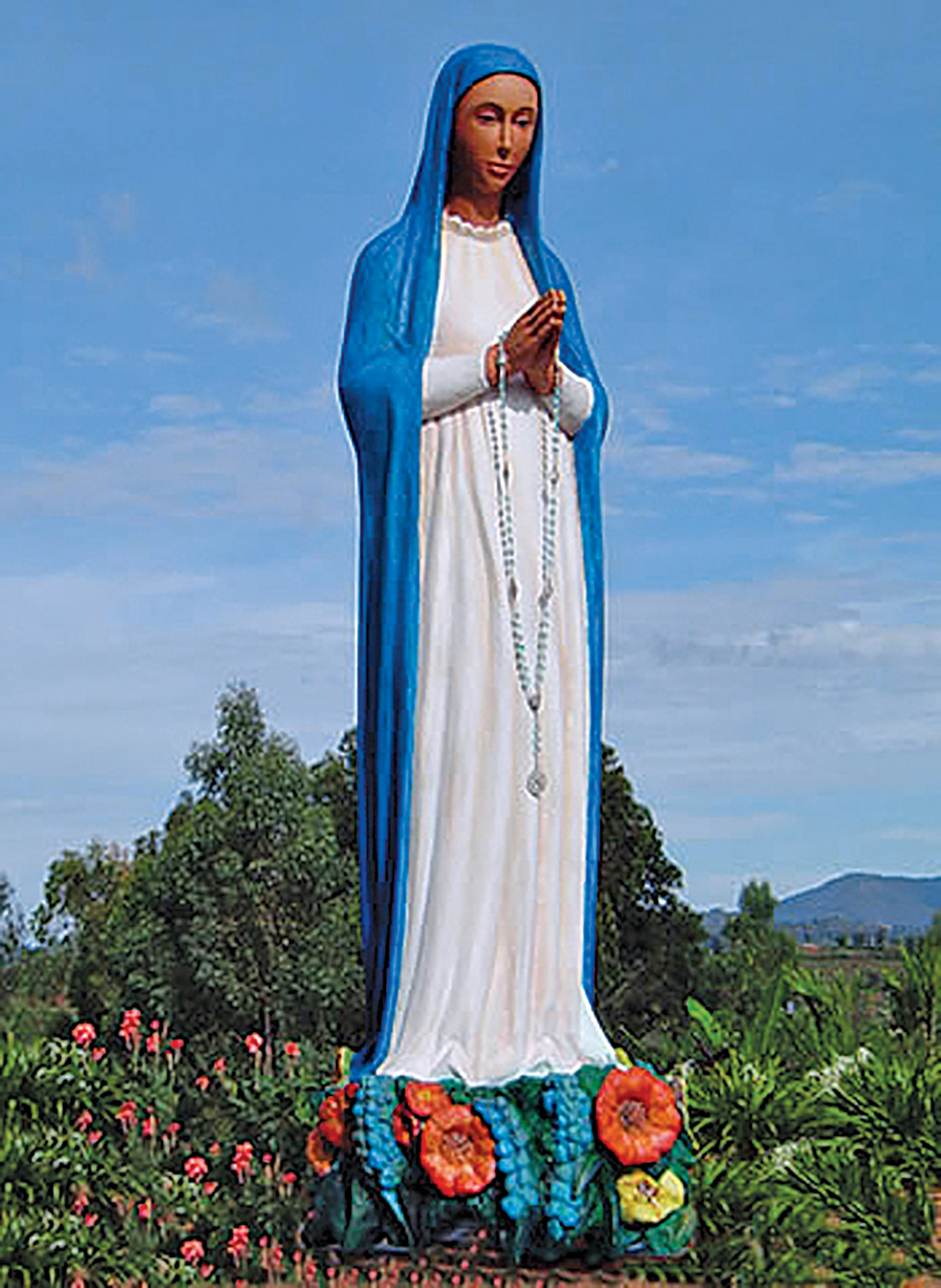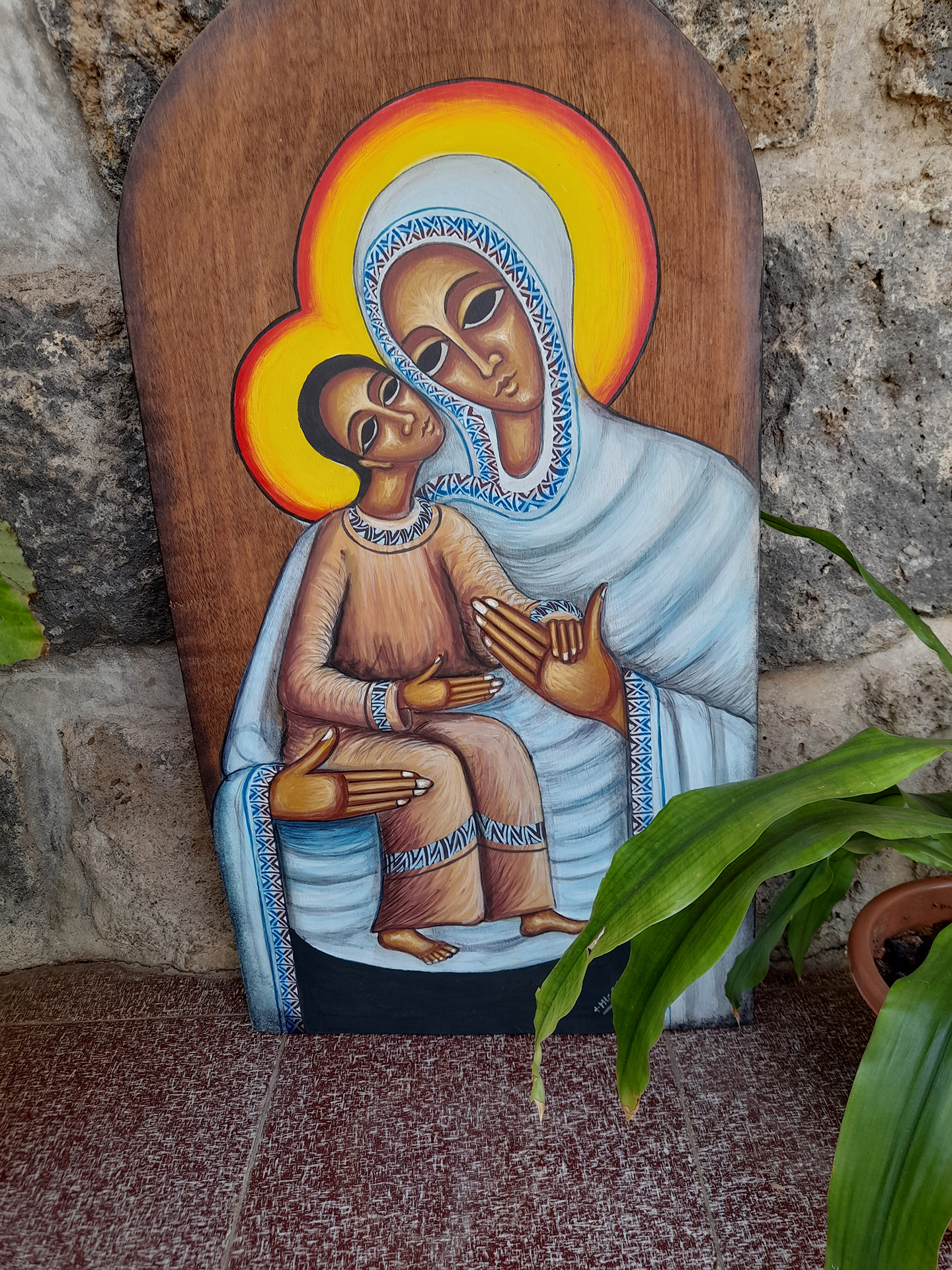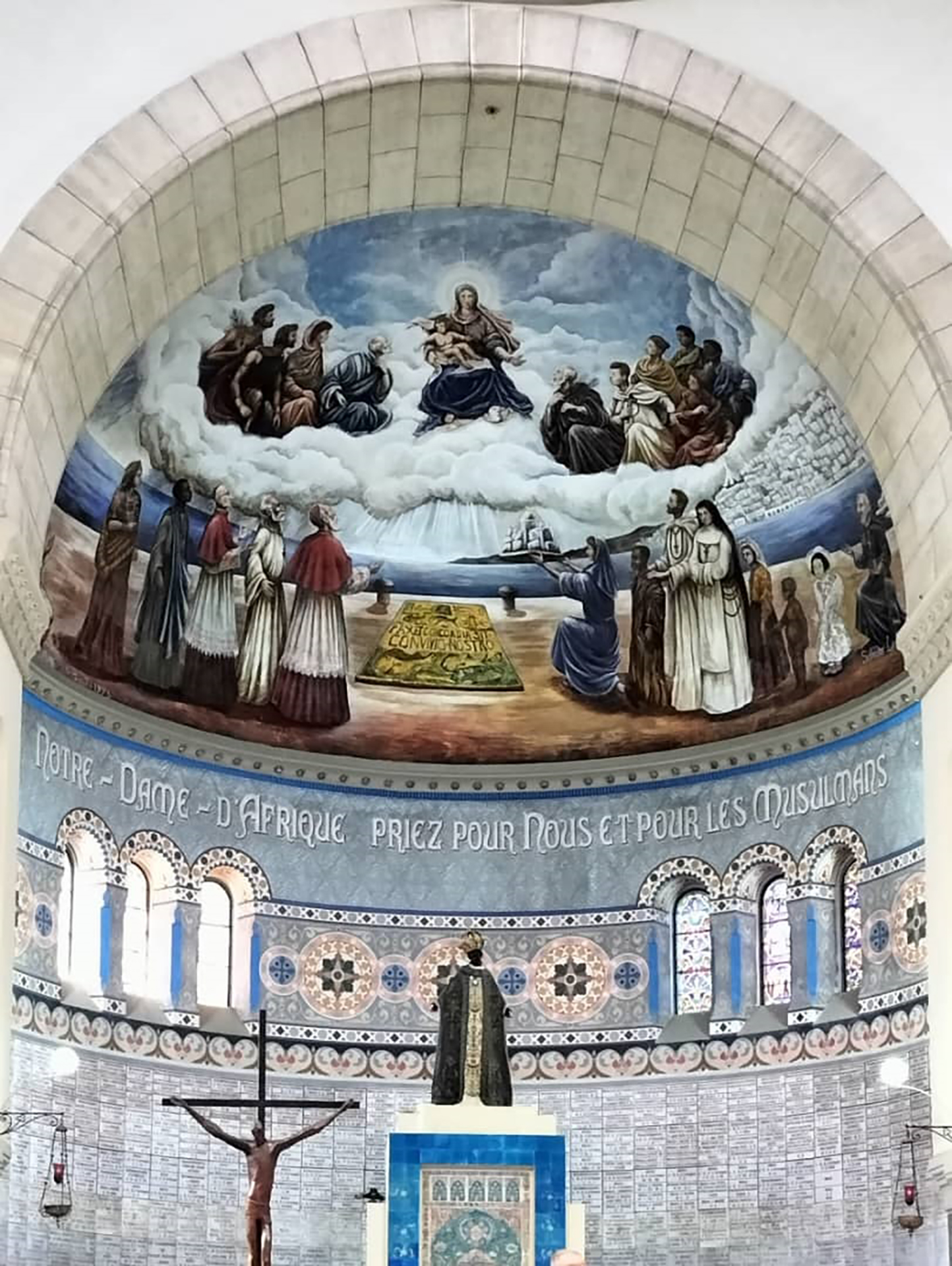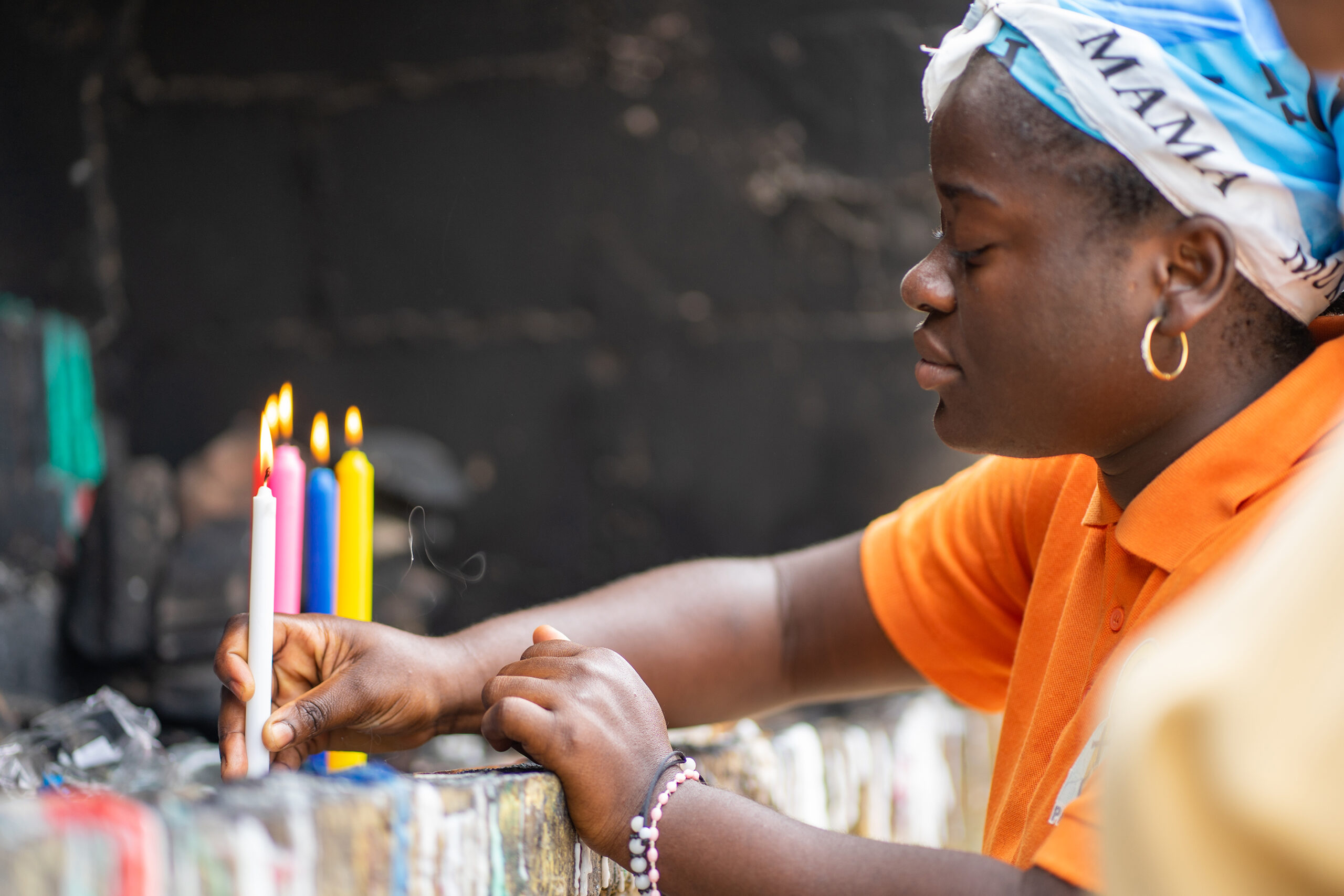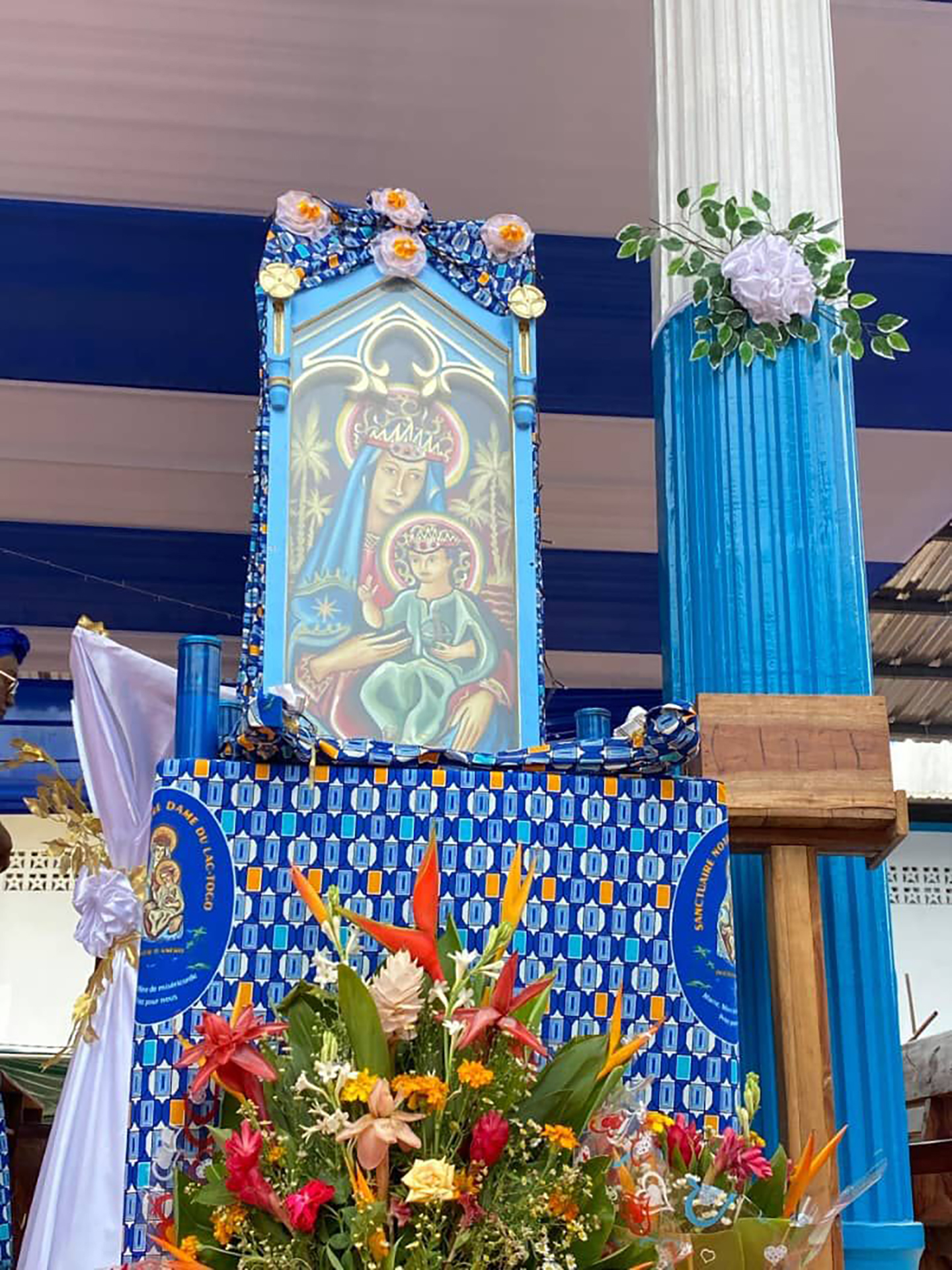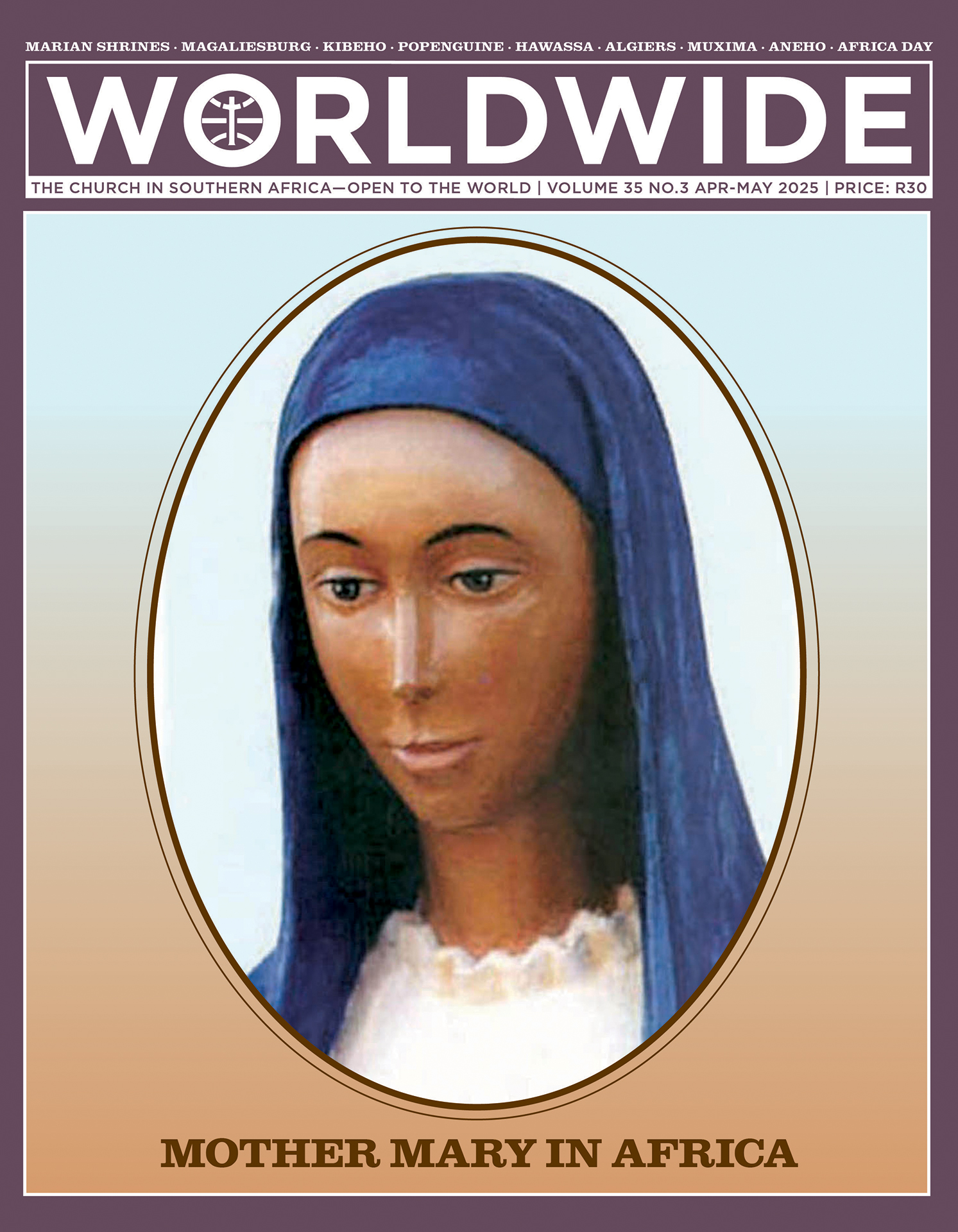
MOTHER MARY IN AFRICA
Head of the Statue of Mother Mary at Kibeho, Rwanda, carved by Marek Kowalski and based on the models of Jean Pierre Sibomana and Faustin Kayitana. In the statue, Mother Mary holds the Seven Sorrows Chaplet, a Marian devotion reintroduced to the Catholic community by Our Lady of Kibeho.
Kibeho is the only Marian apparition on African soil, officially recognized by the Church. Mother Mary’s requests for prayers preluded the 1994 Genocide.
SPECIAL REPORT • POPENGUINE-SENEGAL
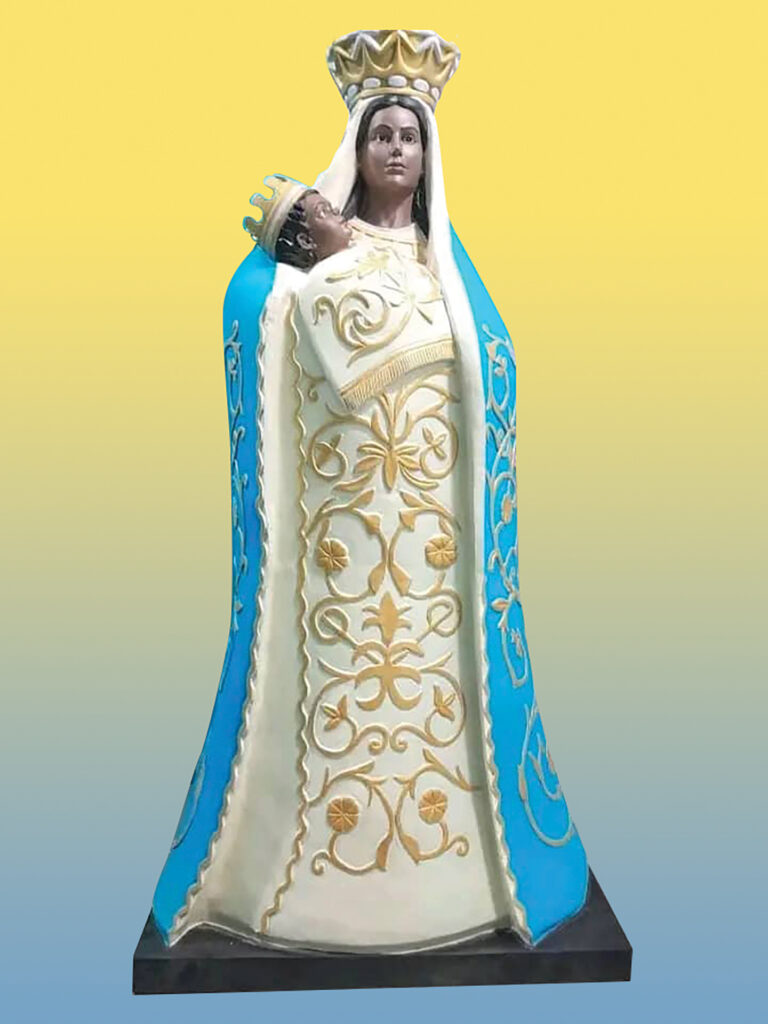
POPENGUINE, THE ‘LOURDES’ OF SENEGAL
On Pentecost Tuesday, 22 May 1888, a crowd of 200 faithful converged on the shrine of Popenguine on foot, on horseback or by pirogue, to venerate, for the first time, Our Lady of Deliverance. Over more than a century, this pilgrimage which now brings together nearly 100 000 people every year, has become a highlight of the Christian faith in Senegal. The faithful from other countries in the sub-region (Mauritania, Gambia, Guinea-Bissau, Cape Verde) also join in this celebration, bearing witness to its spiritual influence.
BY SR ANNE BÉATRICE FAYE CIC | DAKAR, SENEGAL
Origin and history of Popenguine
THE BEGINNINGS of the Marian pilgrimage to Popenguine must be dated back to the evening of 29 December 1887. A few months earlier, on the 15th of May, Bishop Mathurin Picarda wrote to his faithful: ‘The purpose of this pilgrimage, which we hope will open a series of manifestations of faith and piety towards Notre-Dame de la Délivrance (Our Lady of Deliverance), is to solemnly enthrone the Virgin in the new domain we have chosen for her. By this public act of faith, we want to encourage Christian life in the colony and pray for the conversion of souls.’
While there had never been an apparition of the Virgin Mary, Monsignor Picarda wanted to offer Senegalese Catholics a site for pilgrimage, inspired by the shrine of Notre-Dame de la Délivrance in Dover, Normandy, France. This idea came during a walk with priests, members of his congregation, from Cap de Naze to Popenguine. The place seemed providential: Popenguine means ‘head of serpent’, evoking the mission of Mary who, according to Christian tradition, crushed the head of the serpent.
This place of divine grace is deeply embedded in faith and spirituality. Although specific testimonies of healing are not always documented in detail in the available sources, this shrine is known as a place where pilgrims come to seek comfort, to be listened to, a place of hope and healing.
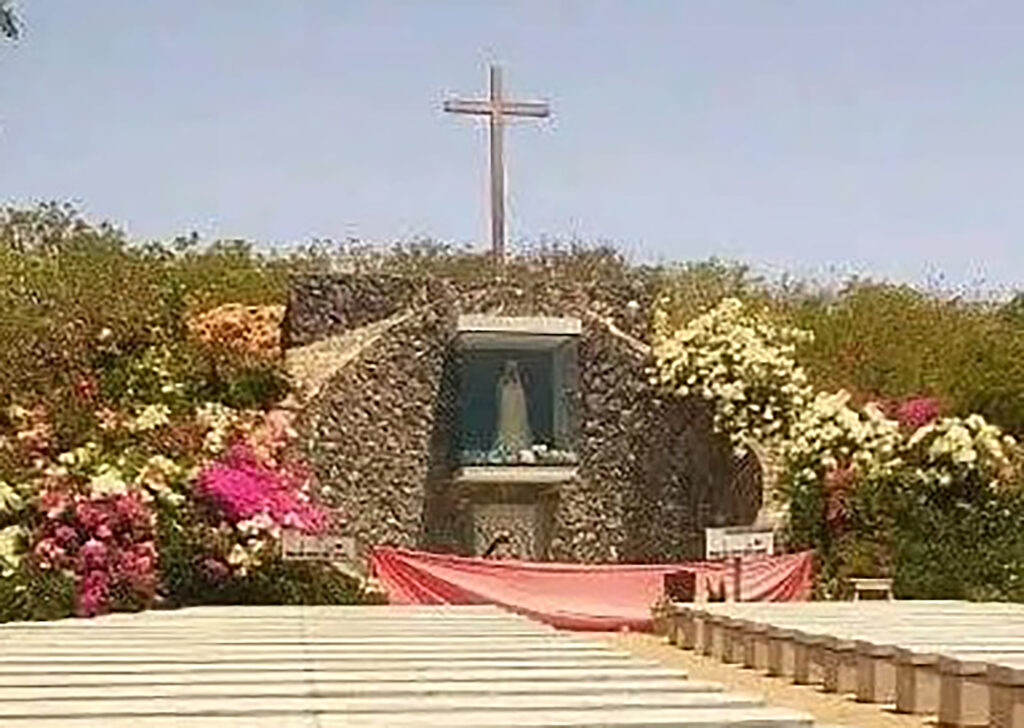
A unique Marian devotion
Notre-Dame de la Délivrance gradually became Notre-Dame de Popenguine, and every Pentecost Monday, crowds of the faithful flock there to pray to the Virgin. Meditation on the Rosary plays a central role, particularly at the Grotto and the Basilica. Throughout the year, families and pilgrims come here to entrust their prayers to Mary, asking for her intercession for their personal and collective intentions. Mons. Picarda wanted Our Lady of Popenguine to be venerated as the one who frees and protects her children from evil.
Meditation on the Rosary plays a central role, particularly at the Grotto and the Basilica.
Rooted in young people’s faith
The youth pilgrimage to Popenguine is a tradition deeply rooted in the Senegalese Catholic faith. Since it was initiated in 1981 by the late Pierre Faye, a former commander of the Senegalese army, it has become a climax of spirituality and communion for young Christians.
Every year, thousands of young people from the various dioceses in Senegal take part in this walk of faith, covering dozens of kilometres in a spirit of prayer, sacrifice and solidarity. The common route includes several stages, before eventually reaching Popenguine. The walk takes place under a scorching sun, on dusty and sometimes difficult roads. Exhaustion, thirst and physical pain are part and parcel of the pilgrimage. The pilgrimage is marked by moments of meditation, particularly at the ‘Tent of Encounter’, a place of worship inspired by Exodus (Ex 33:7-11), where pilgrims meditate and pray in silence.
The young people’s walk to Popenguine is an experience that goes far beyond a simple physical pilgrimage. It is a spiritual journey where every step is an offering, every effort a prayer. The testimonies of the pilgrims reveal just how powerful this experience is. Many describe it as an inner transformation, healing and soothing of their spiritual or emotional wounds, which takes place as the walk progresses. Walking becomes an opportunity for reconciliation with themselves, with God and with others. Some see it as a special time to deepen their faith, meditate on their lives, discern important choices or simply feel closer to God.
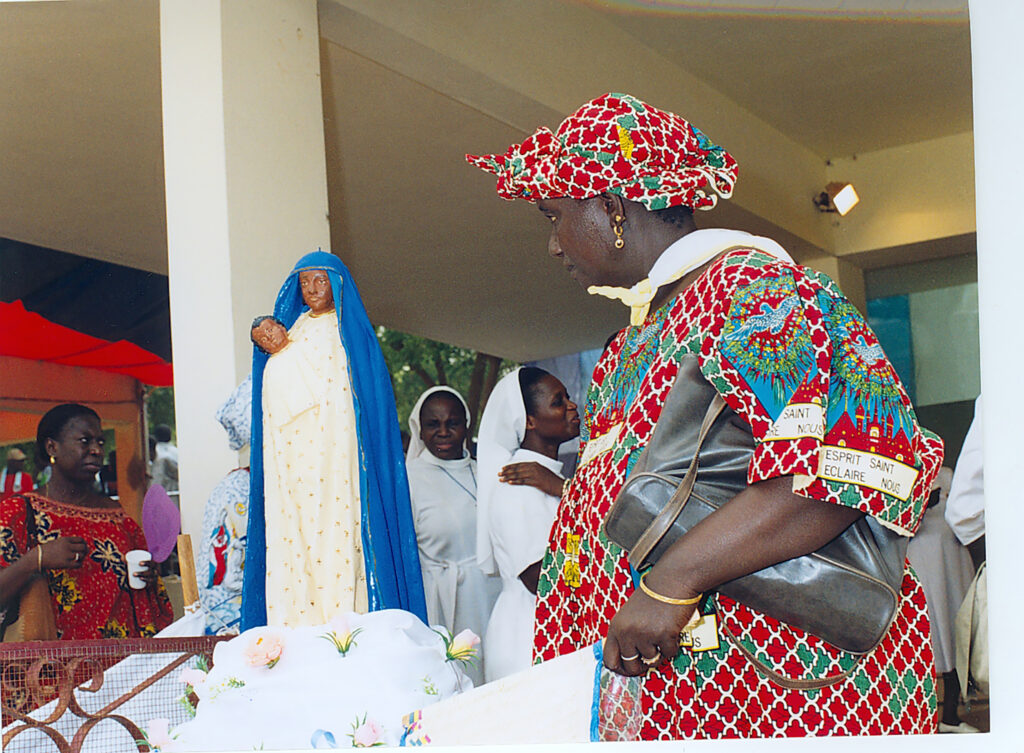
Fraternity forged on the road
One of the most striking aspects of this walk is the fraternal bonds forged between the participants. Far from the individualism of everyday life, the pilgrims experience a Church on the move, united by the same spiritual impulse. Along the way, helping each other becomes natural. They share water, encourage each other, and sing together to forget their fatigue. This solidarity creates a family spirit, and deep friendships are forged that often extend beyond the pilgrimage itself. The hardships are transcended by collective fervour and a spiritual depth. Songs, prayers and meditation transform the effort into an offering. For many, this walk becomes a way of recognising that Christian life itself is a path strewn with pitfalls, but that with faith, every difficulty can be overcome with hope and joy.
For each young person, arriving at the Popenguine shrine is a moment of grace. After hours, or even days, of walking, the pilgrims find themselves before the Virgin Mary, in a burst of thanksgiving. It is a moment of intense emotion, where tears, joy and prayer mingle. Each person arrives with his or her own spiritual baggage, intentions and fatigue, but all leave renewed in faith and buoyed by new hope. The walk to Popenguine becomes not just a geographical journey, but a true inner pilgrimage, a journey to God, experienced in effort, fraternity and prayer.
Interfaith dialogue
The Popenguine pilgrimage is not merely a Christian spiritual experience. It is also a symbol of inter-religious dialogue as is practised in Senegal. The presence of Muslims in Popenguine is not anecdotal, it is a living sign of a Senegal where religious diversity is seen as an asset rather than an obstacle. Every year, many Muslims take part in the Popenguine pilgrimage. Some come with friends or members of their Christian families, sharing their spiritual journey with kindness and openness. Others come out of respect for the figure of Mary, venerated in Islam as the mother of the prophet Jesus (Issa), and regarded as a model of piety and submission to God. This shared recognition of Mary as a spiritual figure creates a bridge between the two faiths, fostering understanding and dialogue.
Popenguine is also an opportunity for intense prayer for peace and unity in Senegal. In a world where inter-religious tensions are sometimes exacerbated, the pilgrimage becomes a powerful testimony to the possibility of harmonious coexistence. Far from being a simple Christian gathering, it unveils a space where all people of goodwill, whatever their religious affiliation, come together to invoke God’s blessing on the country and the world.
The Catholic Church in Senegal, aware of this essential role, emphasises the need to preserve this social cohesion. Bishop Benjamin Ndiaye, faithful to this commitment, regularly reminds us that peace and unity are a heritage to be passed on to future generations. In his speeches, he emphasises the shared responsibility of believers – Christians and Muslims – in building a society based on respect, tolerance and dialogue. He reminds us that religion, far from being a divisive factor, can be a source of rapprochement when spirituality is lived with openness and a sense of fraternity.
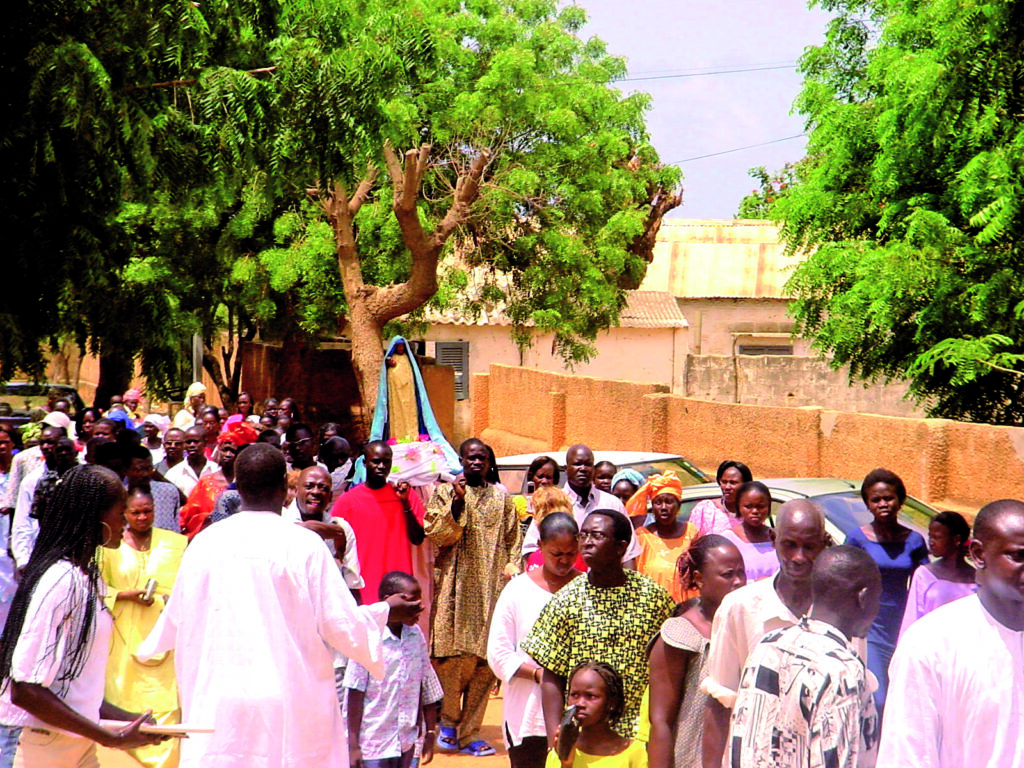
Graces and healings
Thousands of faithful come to Our Lady of Popenguine in search of grace, comfort and healing. Some come with inner wounds, others with physical suffering or burdens they can no longer bear alone. All leave the sanctuary transformed, touched by the presence of God and the intercession of Mother Mary. “He shall wipe away all tears from their eyes. There will be no more death, no more grief or crying or pain. The old things have disappeared” (Rev 21, 4).
The moving testimonies below illustrate the spiritual strength of this shrine.
Path to reconciliation
Awa, a young Muslim woman, carried a profound family wound. An argument with her father had separated the two for years. The pain of this break-up never left her. During the pilgrimage, she felt an unexpected sense of calm. During the vigil, an inner voice urged her to reach out to her father. She sent him a message, something she had never dared to do before. Against all odds, he responded with emotion, ready to renew the dialogue. For Awa, this pilgrimage was an event of true reconciliation and unexpected grace.
“Blessed is she who believed that what was spoken to her by the Lord would be fulfilled” (Luke 1, 45).
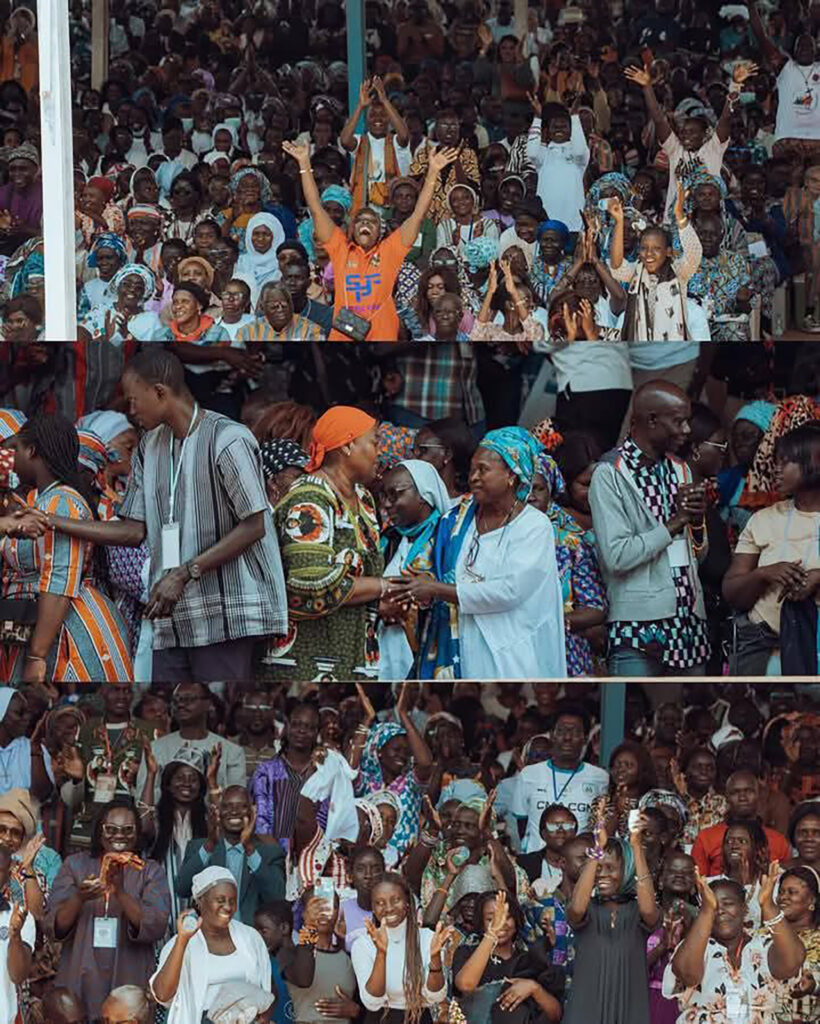
Renewed hope: an unexpected job
John the Baptist, a young graduate, was going through a period of doubt and discouragement after three years of fruitless job hunting. Before the pilgrimage, he had almost given up hope. So, he entrusted his future to Mary, deciding to surrender his fears and uncertainties to her. When he returned home a week later, he received a call for an interview at a company he had been applying to for several months. Against all odds, he was recruited. For him, this opportunity was an answer to his prayer and proof that hope is never in vain.
“What’s more, we take pride in distress itself, since distress, as we know, produces perseverance; perseverance produces tried and tested virtue; tried and tested virtue produces hope; and hope does not disappoint, since God’s love has been poured into our hearts by the Holy Spirit who has been given to us” (Romans 5:3-5).
Under the benevolent gaze of Mother Mary, they leave the shrine with the certainty that God continues to work in the hearts of those who entrust themselves to Him.
Strength after bereavement
Madeleine and her husband had lost their child a few months before the pilgrimage. Devastated, they came to Popenguine with heavy hearts and full of questions. During the procession and the moments of silence before the statue of Mother Mary, they felt a deep sense of peace and renewal of their faith. Madeleine said that, for the first time since the tragedy, she had been able to say: “Lord, I don’t understand, but I trust you.” This grace of consolation enabled them to set off again with renewed hope.
“Whatever you ask in prayer with faith, you will receive it” (Math 21: 22).
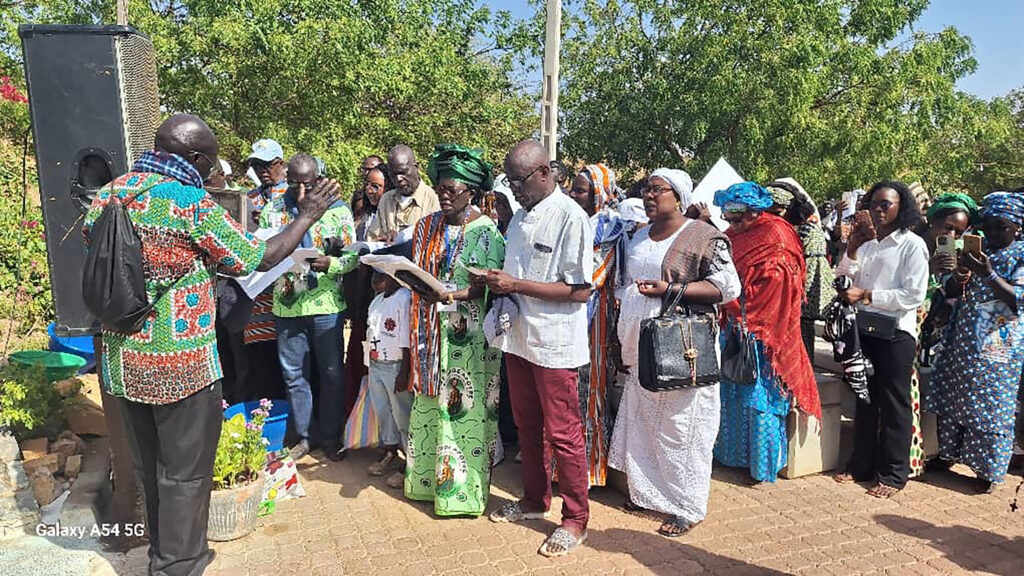
Sight restored
Pierre, a man in his sixties, had been suffering from sight problems for several years. Despite medical consultations and treatments, his vision remained blurred, preventing him from reading and moving around properly. During the pilgrimage, he prayed fervently to Mother Mary. During the blessing of the sick, he felt a deep inner peace and a strange sensation in his eyes. The next day, he noticed a marked improvement in his eyesight, regaining a clarity he had not experienced for a long time. For him, this healing was a sign of God’s love and power. On that day, he decided to move to Popenguine and serve at the Basilica. “Fear not, for I am with you; be not dismayed, for I am your God. I will make you strong, yes, I will come to your aid; I will uphold you with my right arm, the victorious one” (Isaiah 41: 10).
Popenguine is a living shrine of faith and hope. Many visitors experience the power of faith, healing and consolation. Under the benevolent gaze of Mother Mary, they leave the shrine with the certainty that God continues to work in the hearts of those who entrust themselves to Him. With Mary and all the generations of pilgrims of hope, we sing: “My soul praises the Lord, my spirit rejoices in God my Saviour” (Luke 1, 46-47). May Mother Mary continue to accompany her children on their journey of faith and hope.

